This is the first post in a new series titled ‘The Language of Flowers’. This is a subject I’ve enjoyed for years - I first used it as a theme for an illustration project back in 2015 and have come back to it several times since. I’m combining my love of drawing florals and plants, with a fascination in their stories and the science behind them. I’ll be picking one flower or plant per month, using it as inspiration for lots of artwork, and sharing lots of lovely facts about it.
Note: there is a vast amount of information and differing opinions on the language and meanings of flowers, so these posts will not be extensive. Feel free to let me know any additional facts or definitions you have heard for these plants!

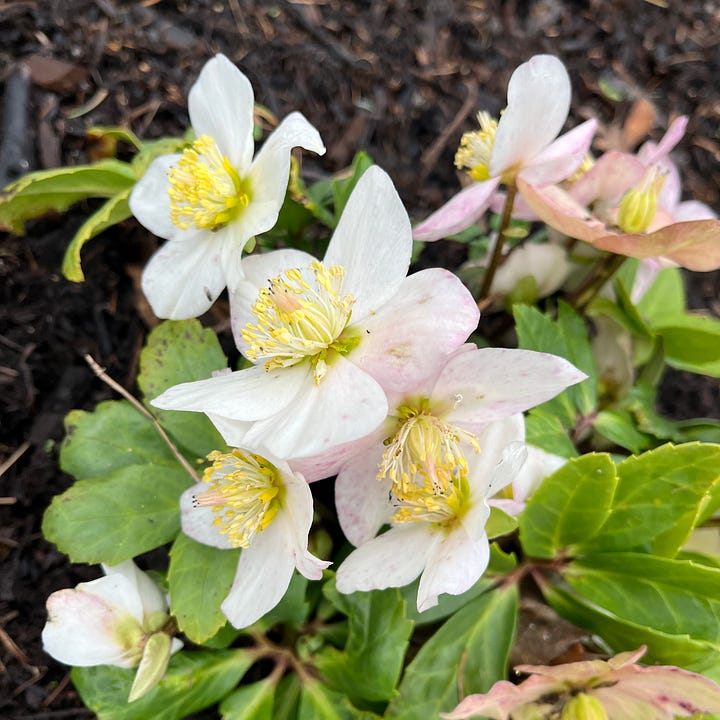
When I was choosing the plant to feature for the first The Language of Flowers post, I spent a day drawing at Kew and noticed lots of Hellebores all around the gardens, so it seemed like the perfect place to start. I got started right away and filled 4 double page spreads of my sketchbook with this beautiful flower.



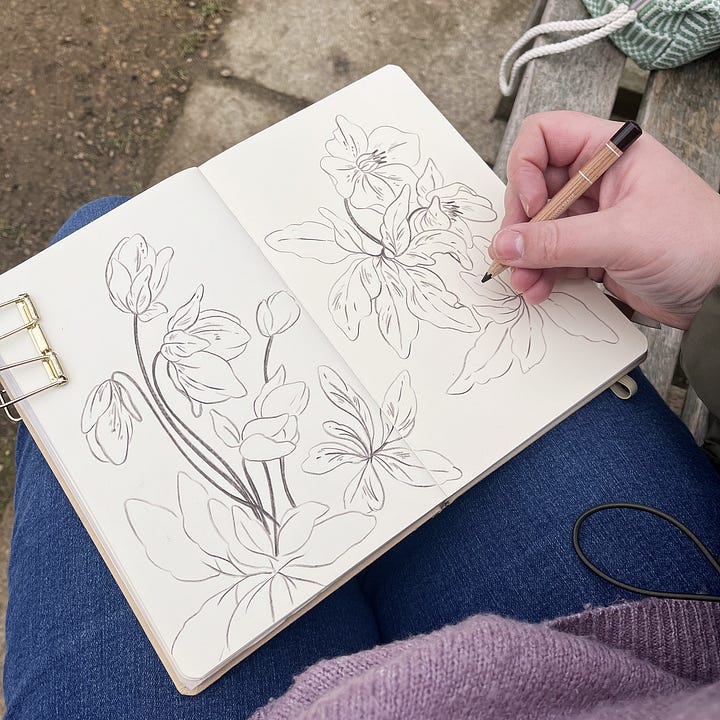
Helleborus
Alternative names: Christmas Rose, Christmas Aconite, Lenton Rose
Symbolic Meanings: Serenity, Delirium, Anxiety, Scandal
Modern traditions associate Helleborus with serenity, tranquility and peace.
The Victorian Language of Flowers used Helleborus to signify delirium.
In Greenaway’s version of floriography, Helleborus means “relieve my anxiety.” Sending this flower to a loved one might send a message to ask them to reassure you of their enduring affection
In some cultures, Helleborus represents stress, anxiety and scandal.
As the flowers bloom in winter, they can also represent “hope in darkness”.
There are also specific meanings for each colour of Helleborus:
White: Innocence, Purity, Tranquility, and Hope.
Yellow: Joy
Green: Good Fortune, Prosperity, Health, and Rebirth
Pink: Femininity, Delicacy, Peace
Purple: Respect, Royalty and Successful Endeavours
Dark Purple / Black: Mourning, Power, and Mystery
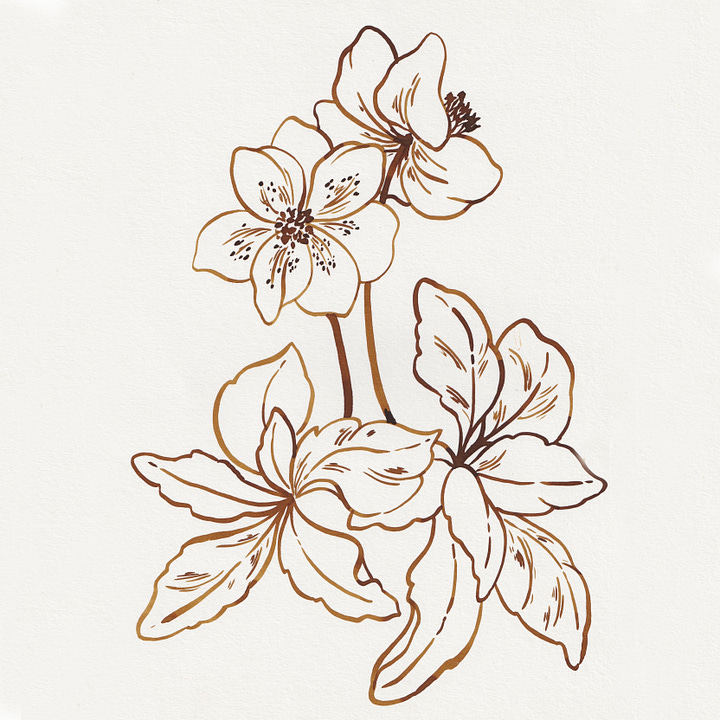
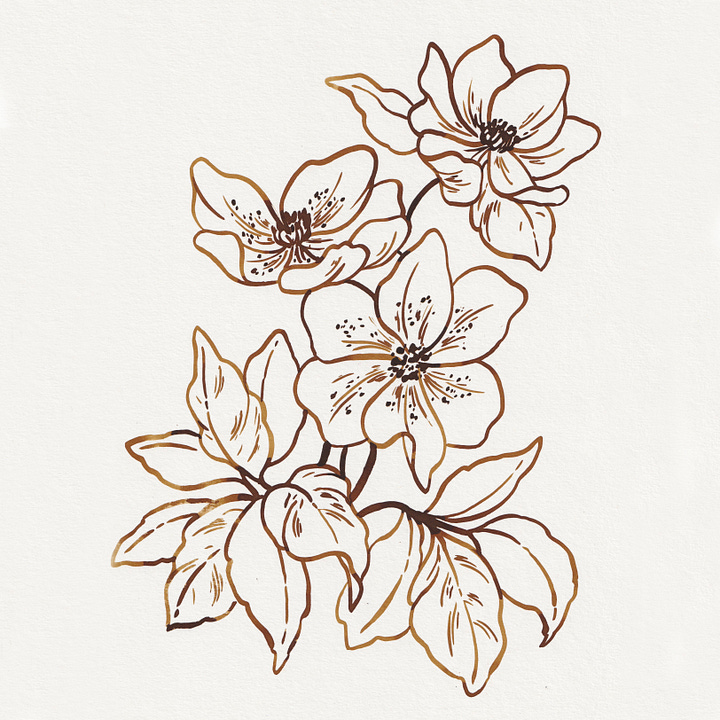
Behind the Name:
The name Helleborus is derived from the Ancient Greek work for the species, Helleboros: Heleîn, meaning “to injure”, and Borá, meaning “food”. This was likely because the Helleborus is poisonous when ingested.


Folklore:
Despite being incredibly poisonous, Helleborus was once believed to push out unpleasantness and bring tranquility to a room full of negativity.
A medieval legend tells the story of how Helleborus is able to bloom at Christmas. Madelon, a shepherdess who was crying at her lack of a gift for the baby Jesus, was taken pity on by an Angel. When Madelon’s tears hit the ground, a “Christmas Rose” miraculously appeared from the snow - providing her with a perfect gift to present at the manger.
Floral Facts:
Helleborus belongs to the plant family Ranunculaceae (they are not related to roses at all as their common name might suggest). The family contains more than 1800 species including: Anemone, Delphinium, Nigella, Clematis, Aquilegia and Buttercups.
The genus Helleborus contains around 15 species, including Helleborus Niger (commonly known as the “Christmas Rose”) and Helleborus orientalis (The “Lenten Rose”)
Helleborus Niger meaning “Black Rose” has white flowers - the “black” in its name refers to its roots.
Some species of Helleborus can survive temperatures as low as -15°C (5°F) and their pollen can even germinate at sub zero temperatures. Their deep roots and thick leaves help them to survive under a layer of snow and they’re largely unaffected after the ground has frozen and thawed.
Helleborus can self germinate, however the resulting plants are often not true to type - with the parent characteristics being diluted or lost.
Helleborus has been used for various medical cures and remedies throughout history, but its toxic qualities have meant this was often hit and miss.




Resources:
Articles:
“The Christmas Rose as a Medicinal Plant”, Julie Wakefiled
The Ultimate Guide to Hellebore Plants
The Language of Flowers
Hellebore Flower Meaning, Spiritual Symbolism, Color Meaning & More
Books:
How the Rose Got its Thorns & Other Botanical Stories, Dr Andrew Ormerod
The Complete Language of Flowers, S. Theresa Dietz
RHS Genealogy for Gardeners, Dr Ross Bayton and Simon Maughan
RHS Botany for Gardeners, Mitchell Beazley







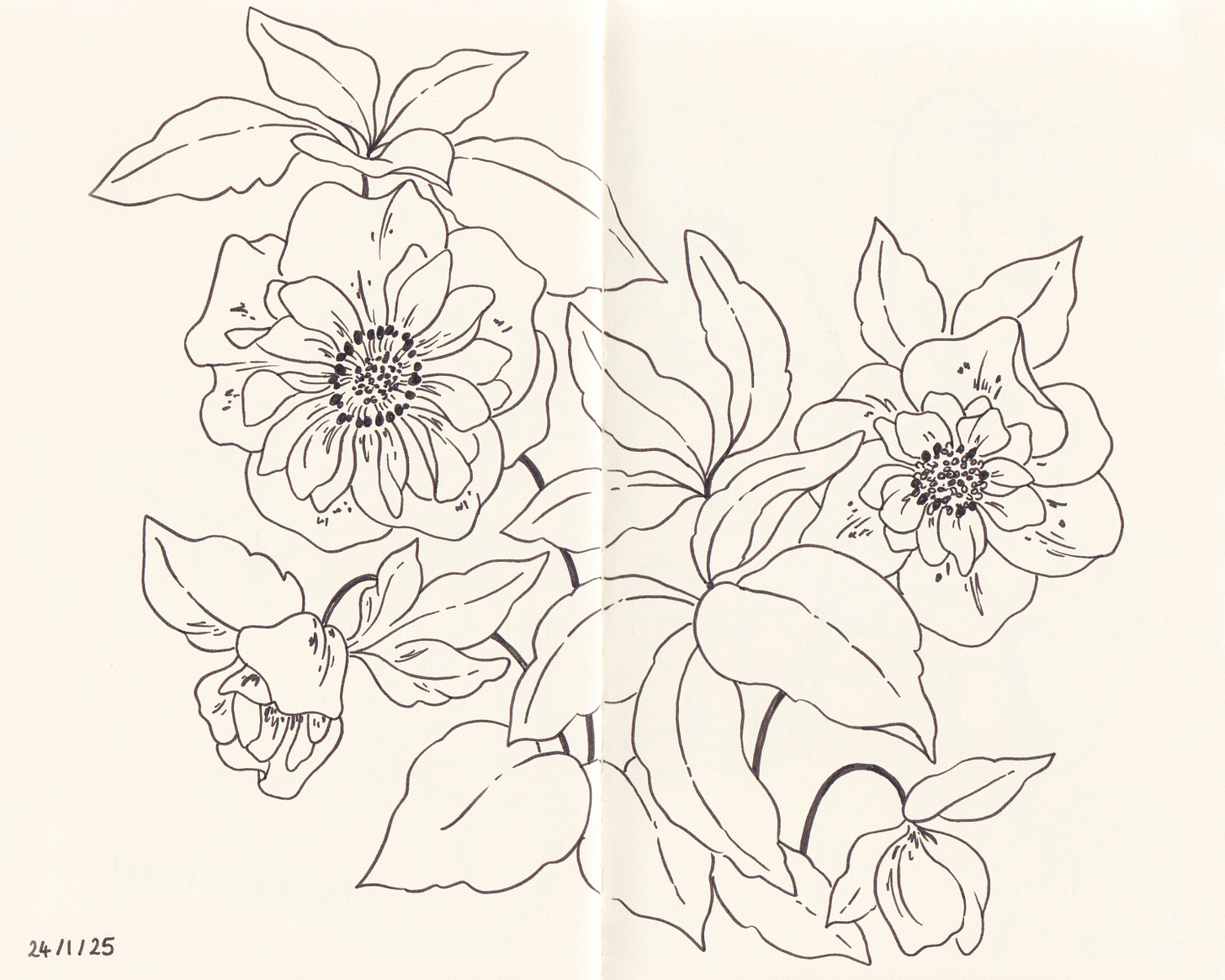

Nice work. Thank you for making a little smarter this morning.
This entry was a boon to my morning. Looking forward to more.
Signed- a novice gardener 🌱